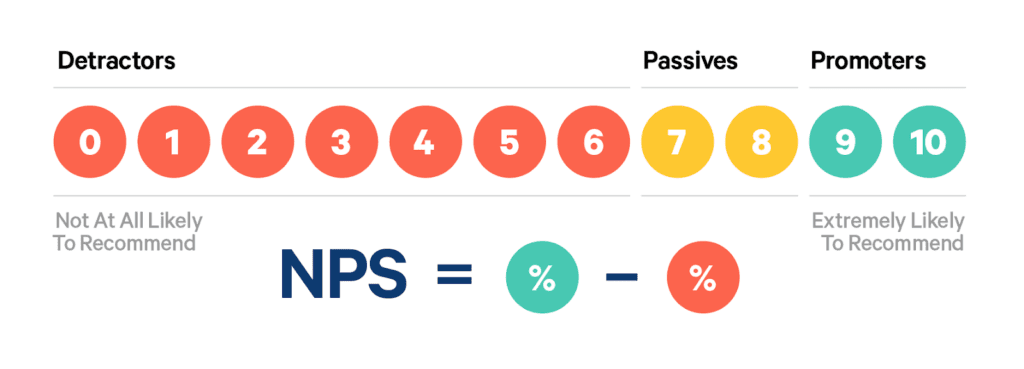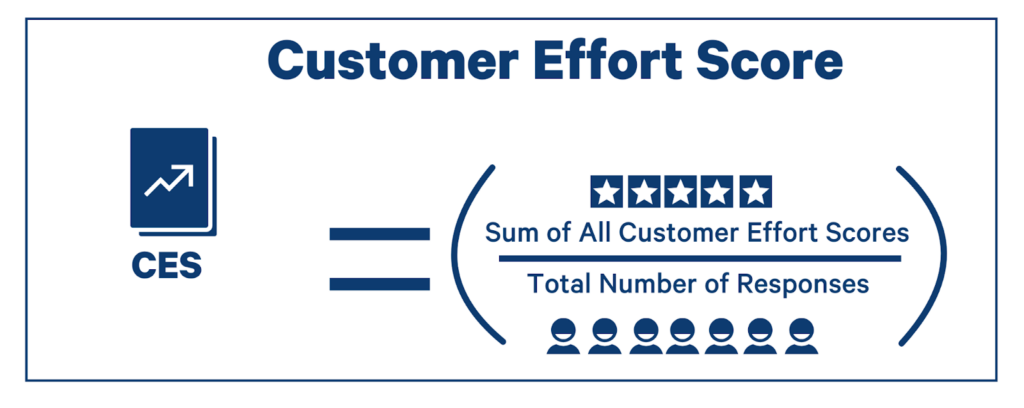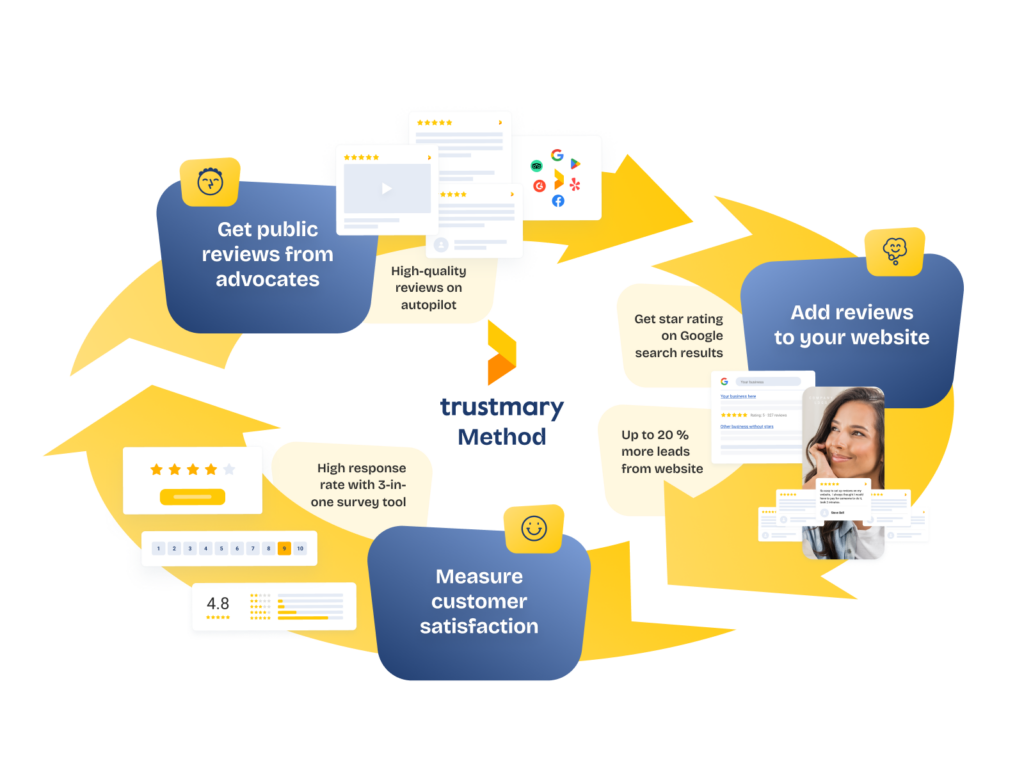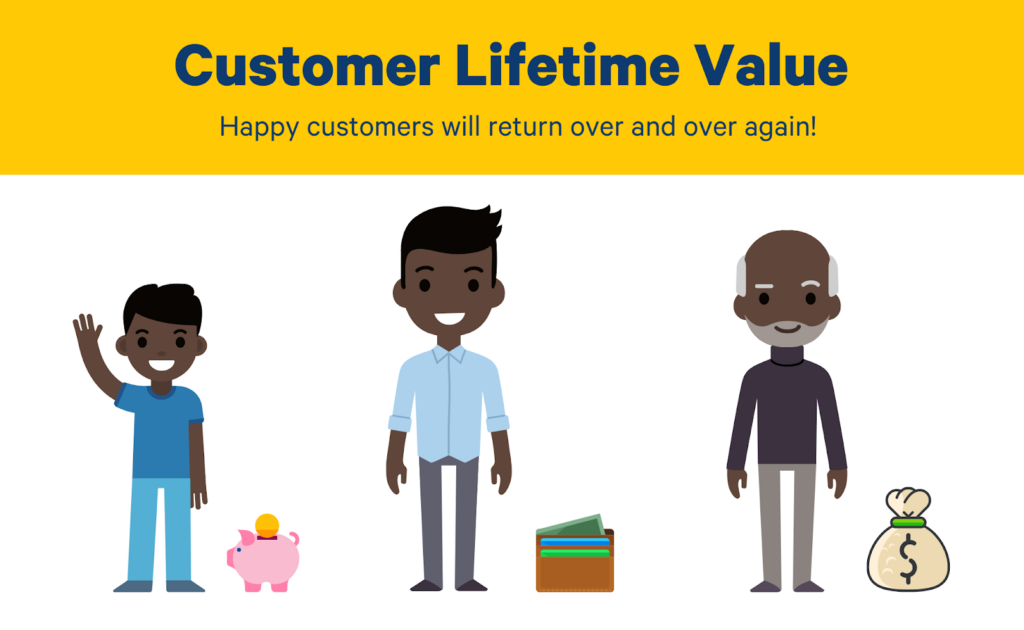Use Automated Emails to Measure Customer Satisfaction


Automating customer feedback collection is easier than you think.
Were you aware that if you add measuring customer experience to your existing processes and workflows, you're making sure you're getting valuable insights constantly.
The easiest way to create a customer feedback loop is to set triggers during the customer journey when automated email surveys are sent.
My customer success colleague Petteri Puumala researched this topic and found out that companies that automate feedback collection get 30% more feedback monthly than companies that rely on manually sending surveys.

In this article I'll go over:
- How automated email helps you with measuring customer satisfaction
- Why to adopt automated email feedback surveys
- What benefits regular feedback provides
- Various types of customer satisfaction surveys
- What triggers to use in B2C and B2B contexts
- Examples of messages
- Tips on engaging email messages
- How to turn feedback into testimonials
What Are Automated Emails?
Automated emails are email messages that are sent at pre-determined points in time.
An automated email can be sent on a specific day or time, or upon a specific action or trigger.
A popular way of automating emails is an auto response when someone is out of the office or no more using a company email.
Marketing email automation is often used for promoting products, sharing post-purchase information, or nurturing leads.
Those messages are created using marketing automation software tools that are connected with your email service provider.
In this article, I focus on automated emails for measuring customer satisfaction which also generate B2B online reviews.
The beauty of automated emails is that you can formulate them beforehand and they will be sent automatically at the right time.
Even if you are not working, the emails will reach their target audience at the perfect time.
Why Use Automated Emails to Measure Customer Satisfaction?
When you use automated emails to collect customer feedback, you:
- Save time
- Get more timely feedback
- Get regular feedback
- Establish a stress-free feedback loop
There is no way you could send a regular feedback survey to each customer without email automation.
How Automated Emails to Gather Feedback Work
At their simplest, automated emails are sent based on different triggers or friction points.
For example, a customer submits a ticket in your chat.
Your customer service agents resolve the issue, and let the customer know. Once the agents mark the ticket resolved, a satisfaction survey is sent to customers asking how happy they are with how the issue was resolved.
Another example from our workflow automation is:
- Customer success manager has a kickoff meeting with a customer
- One completed, the kickoff task in CRM is marked as done
- A survey is sent to the customer
- 3 months after the kickoff, the customer gets a satisfaction survey (+reminder)
- 6 months after the kickoff the customer gets another satisfaction survey (+reminder)
We get so much customer data without lifting a finger! We can focus more time on personalized support.
Eliminate Human Error with Automation Technology
If you don’t have automated customer satisfaction surveys, you will most likely not get regular feedback. That's a massive mistake considering that customer feedback = customer data = customer insights.
These help recognize feedback trends, which help make data driven decisions to improve workflows to make happy customers stay happy, and unhappy customers turn happy.
Additionally, you aren’t able to send surveys at the right time manually. You need a software tool that tracks the customer journey and provides timely feedback surveys.
Finally, you have a big and unnecessary mental workload if you must remember to send the messages manually. Be honest, is it really cost effective to have your support agents or customer success managers send out surveys by hand after meetings?
Didn't think so...
Customer interactions can't be automated, but automation technology is great for eliminating routine tasks like sending surveys.
Types of Satisfaction Surveys
Before diving into the different triggers and friction points to use for automated emails, let’s see the types of customer satisfaction surveys.
These are all dependent on the KPIs of the customer experience you're tracking – or want to track.
NPS
Net Promoter Score is a feedback survey method that measures willingness to recommend. It's one of the key metrics for measuring customer loyalty.
The customer is asked a question: “How likely are you to recommend our product or service to a friend or colleague?”
The answer is given on a scale from 0 to 10, and based on the number given, respondents are divided into three groups: Promoters, Passives, and Detractors.
Next, the percentage of Detractors is subtrackted from the percentage of Promoters.
Your overall NPS score is a number between -100 and 100. The closer to the full 100 you are, the better!

If you want to learn more about NPS, see our recent articles:
CSAT
CSAT is short for Customer Satisfaction Score.
This survey type asks the customer “How satisfied are you with our product or service?”
The answer is given on a scale from 1 to 5, often characterized by smileys or emojis.
CSAT is calculated by dividing the number of satisfied customers (score 4 or 5) by the overall number of responses.
You will learn how many percent of customers are satisfied with your product or service.
There are great CSAT software tools that you can easily set up!
CES
Finally, there is the Customer Effort Score. It tells you how easy the customers find interacting with your company.
This survey asks “How much effort did you have to put in to get your issue solved?”
The answer is given on a scale from 1 to 5.
CES might not tell much about customer satisfaction or emotional impact, but it reveals pain points in business and within the customer journey and helps you improve them.
A customer might be thinking positively about your company, but still had a difficult time doing something this time. Or vice versa: maybe it was easy to complete the desired action, but the customer is not super satisfied with the experience overall.

Follow-up Questions
While all these satisfaction survey methods give an overview of your customers’ opinions and trends, it’s best to always include an additional open-ended question.
In this question, the customer can elaborate on why they chose a particular score.
After all, it’s crucial to know why and what makes a customer feel a certain way. Otherwise, you are clueless about what to do about possible issues and pain points.
In case of positive feedback, you can use these comments to find out what your customers especially appreciate!
Triggers to use in B2C
Now, let’s move on to the triggers you can use for customer satisfaction surveys.
First in line: B2C companies.
The triggers are planned to fit digital spaces like e-commerce stores. It can be difficult to connect real-life interactions with email marketing automation, which is why it’s best used in online shopping contexts.
Purchase
After a customer has made a purchase, you can ask for their first impressions on your website or online store.
Additionally, you can use CES to find out if the purchase process is easy to complete.
Example Email
“Hi there!
Thank you for making a purchase! We are glad to have you as a customer.
Would you like to rate your experience today?”
Cart Abandonment
If a customer puts something in the cart, it means there is initial interest in your products.
However, something might make them abandon the cart.
It’s important to know if this has to do with your online store so that you can fix the potential problem.
Cart abandonment is not always your fault: it can be due to the customer’s personal situation, too.
Example Email
“Hi!
There are items in your cart. Would you like to complete the purchase?
If not, would you like to tell us what made you abandon your items?”
Pro tip: You can always try to get the customer back by e.g. using exit-intent popups that promote discounts, freebies, or other benefits if the customer completes the purchase.
After Delivery
Bad shipping or delivery experience might have a surprisingly great effect on customer satisfaction.
It’s a good idea to monitor how the delivery of your products goes. You want to be able to evaluate if you have the right partner…
If the customer satisfaction in shipping or delivery is significantly different than e.g. in the buying process or regarding customer service, you should be alarmed.
Example Email
“Hey!
Your order (nr. 12345) is delivered. We’d love to hear how the delivery process was for you. Fill in the brief survey here: link”
Customer Support
When the customer interacts with customer support, for example regarding returns, complaints, or other issues, you have a chance to turn a dissatisfied customer into a happy one.
Those interactions are critical points in the customer experience, and you want to stay on top of the situation.
Pro tip: Remember that when you receive bad feedback on customer support chats or calls, you should also listen to the employee’s point of view before making further judgments.
Example Email
“Thank you for contacting our customer support!
We hope your issue was resolved. Tell us how the experience was: link.”
Triggers to Use in B2B
B2B companies and B2C companies have some differences, which require different approaches to customer feedback.
Oftentimes, B2B companies have longer sales cycles and longer relationships with customers.
The purchases are also bigger and there are fewer clients, which means one client can have an enormous impact on the business.
That’s why it’s essential to take good care of business relationships.
The triggers mentioned in this list require that you are actively using CRM. The automation relies on the fact that you register every action and step on the customer journey on your CRM tool, like HubSpot.
Did you know you can replace HubSpot NPS with Trustmary and salespeople will get up-to-date information about the customers' satisfaction levels directly in HubSpot?

If you are not yet actively using CRM tools, read the tips our specialist gives on effective use of CRM for feedback flows.
First Meeting
The first meeting with a client establishes expectations for the potential future business relationship. Succeeding at this stage can mean significantly less difficult customers in the future, as you've not over-sold your solution.
Ask the prospects how they felt about the meeting. It helps you improve in the future and might offer insights on how to act around this particular client.
If you want, you can specify the feedback questions to target specific traits of the salespeople:
- How would you rate the expertise of the sales representative?
- How satisfied are you with the customer service you received?
- How easy was it to understand the product/service as explained by the employee?
This information is important regardless of whether the client wants to continue with the sales process or not.
Example Email
“It was nice to meet you today! We would truly appreciate it if you could let us know what you think of the meeting.
Fill out a short satisfaction survey here: link.”
Closing
When a deal is closed, it’s the perfect time to gain insight into the overall pre-purchase experience.
This is usually a fruitful moment to collect testimonials: clients have been impressed with you and decided to do business with you. They are likely satisfied with the experience so far.
Example Email After Closing a Deal
“Thank you for purchasing our product/service, and congratulations on making a great decision!
We would love to hear what you think about your experience with us this far. Please fill out our satisfaction survey, it will only take a moment!”
Closing + Wait = Feedback on Product or Service
Give your customers some time to get to know the product or service before asking for their opinion.
Set the email to be sent e.g. after a few days, a week, two weeks, or a couple of months after closing.
A suitable timeframe depends on the type of product or service.
If you are selling e.g. a self-service software product, it’s good to be pretty fast with customer feedback. The customer might be struggling with something, and you have a chance to relieve their frustration.
On the other hand, if you sell project-like services, the best way is to ask for feedback during and after the project.
Example Email
“We hope you have been enjoying your new product/our service!
It’s our passion to help you in the best way possible. Please let us know if there is anything we could do for you!
Fill in this short survey to give us your honest feedback: link.”
Customer Support
Just like in B2C context, customer support interactions are important points for feedback in B2B.
This is a great opportunity to get personal feedback and learn how clients view the skills and expertise of the customer support team.
Example Email
“We hope that your recent experience with our Customer Support was pleasant and your questions were answered!
Please help us improve by rating the experience: link.”
Registering for Free Plan
Attention, software companies!
When someone registers for a free plan or free trial, a brief customer satisfaction survey can be a gateway to more thorough feedback.
Ask the new customer how they find your tool and learn:
- If there is something the customer needs help with.
- If the customer knows how to use the software.
- If the software tool is clear and easy to understand.
- What you could do to improve the onboarding process.
Use the brief survey method like NPS, CSAT, or CES as a first question, and if the score is low, ask more follow-up questions.
Example Email
“Great to see you here! How are you feeling about the platform so far?
Please rate your experience and help us help you get the most out of the tool: link.”
Going Invisible
When someone has not been interacting with you or doing anything with the software tool, it’s good to check on the inactive customer and find out if there’s a problem you can help with.
Example Email
“We haven’t seen you for a while. Is there something we can help you with?
Fill out this short survey and let us know how you’re doing: link.”
At Regular Intervals
B2B customer relationships are often long and can span over months or years.
Most of the time, there isn’t much going on. Even then, it’s good to reach out from time to time and ask how your clients are doing.
This could be done e.g. once a quarter.
To do this, you don’t necessarily need to have a CRM or other tool to integrate into Trustmary. You simply time a survey to be sent to your whole contact list at set intervals.
Example Email
“Hi there! How has it been for you the past couple of months?
Would you like to fill out a brief satisfaction survey? Here’s the link: - - - “
Craft Engaging Messages to More Gather Feedback
If you want your customers to actually respond to your surveys, you need to formulate an effective and persuasive automated email.
The message and other details also have a big impact on the deliverability of the emails.
Let’s look at how you can formulate great messages that reach your customers comfortably and also get them to answer your questions.
Sender
Everybody receives tons of emails daily. We are quick to delete any messages that sound like spam or unimportant.
If the sender of your email is something that doesn’t ring any bells (especially combined with an uninteresting headline), you risk getting thrown in the trash.
Make sure your email is recognizable. If possible, use the company name or a combination of your name and the company name.
If you send the email directly from Trustmary, the sender will be called “Trustmary”. At first glance, it might not seem ideal. After all, that doesn’t really connect the email to you.
But wait until you hear this: When Trustmary is the sender, it can actually result in more honest feedback compared to if you send the survey with your own name!
Subject Line
The subject line must be engaging enough that customers open your email.
But how can you make a feedback survey sound interesting?
It’s a perpetual problem, and the cold hard truth is that most people will still ignore your message, no matter how good the subject line is.
However, I encourage you to be upfront about what the message is about. At least it saves time for the customers who wouldn’t leave feedback anyway.
You can use the recipient’s name in the headline to add personalization.
Some ideas:
- Hi Mary, rate your latest purchase
- Give us feedback
- Let us know how you feel about our service
- Long time no see! How are you doing?
- Can I borrow a minute of your time for a feedback survey?
The Content
The actual message doesn’t have to be too long. Get to the point quickly, but try to avoid being too vague or seeming like you just sent an automated email.
There are some hacks that you can try and use:
- Highlight how helpful your feedback is.
- Tell how little time it takes to complete the survey.
- Make the message personal.
Read more tips on effective email messages.
Don’t Forget the Reminder Message
It’s surprising how many people will forget about your request the first time but complete the survey after a reminder.
A reminder or subsequent follow-up email is a must if you want to get replies.
This new message can be very brief but should continue with the same tone as the previous one.
If you chose to take a personal touch to your first message, keep it going in this one, too.
Benefits to Expect with Email Automation for Customer Satisfaction Surveys
Now you know what you can do.
But why should you do all that?
Up next: benefits you should expect from the efforts.
Improve Customer Experience and Satisfaction
You know this already: your customers are the best people to answer what you should improve to make the experience better for them.
You can make guesses about what your customers want and need, but the only way to know for sure is to ask for feedback regularly.
Over time, you will be able to improve the customer experience, which in turn results in increased customer satisfaction.
Increase Brand Loyalty
Listening to your customers is key in building brand loyalty.
You can enhance the effect by implementing an effective customer feedback loop that takes into account an often overlooked aspect: communication with customers after they have given you feedback.
When the clients know that their feedback is actually used to improve your business, they will feel more inclined to stay with you.
It’s not always the case that the product or service develops according to customer needs.
Much less often does one receive a message: “Hi! We have considered your feedback and have now tweaked the feature you were talking about. Have a great day and thank you for letting us know about your feedback!”

Grow Customer Lifetime Value
The cycle goes on.
Brand loyalty increases customer lifetime value.
A functional customer feedback process is a loop of positive influence. Once you improve the customer experience, all other benefits follow.
Save Time with Automated Workflows
The reason that prevents most businesses from collecting customer feedback is the lack of time and resources.
But the thing is, the feedback loop does not need much time or resources.
Once you implement an automated email flow, you can free your time for more important tasks.
Accumulate Customer Data
Finally, the more feedback you ask for, the more you get, and the more you learn.
At some point, you will be able to segment the customer feedback and find out how each segment feels about you.
Next, you can move to create strategies and personalized content for each customer segment.
You will learn more about your target market and be able to make more educated decisions on what direction to take with your business.
Set Up Automated Customer Feedback System
This article introduced automated emails and how to use them for different types of customer satisfaction surveys.
I walked you through triggers that you can use in your CRM to launch these automated email surveys.
Automating customer feedback collection is a no-brainer if you're aiming to consistently improve your service and keep customers happy. Instead of manually sending surveys, let automated emails do the heavy lifting.
With tools like Trustmary, you can trigger surveys based on specific customer touchpoints—like after a purchase, support interaction, or project completion. This ensures you're asking the right questions at the right time, boosting response rates and gathering fresh, relevant insights.
But here’s the real magic: you can collect glowing testimonials while measuring satisfaction. When a customer gives you a high score, Trustmary can immediately prompt them to leave a public review or testimonial. This kills two birds with one stone:
- You get valuable feedback to improve your service.
- You build social proof to boost trust and conversions on your website
Instead of letting those happy customers disappear into the void, you’re turning them into advocates. And it all happens automatically.
Once set up, the system runs on autopilot—tracking NPS, CSAT, and qualitative feedback—while helping you leverage positive experiences into powerful marketing assets. Add integrations with your CRM or email tool to make things even smoother.
Pro tip: Publishing testimonials collected through satisfaction surveys shows your prospects that real people love your service—and that you actually care about your customers.

Testimonials and reviews on your website build trust and help you get more customers. Start today.
Further Reading
FAQ
Why to use automated email marketing for measuring customer satisfaction?
Automated satisfaction surveys save you time and help you collect more regular feedback from customers. Without an automated email strategy, you are most likely not achieving the same results.
How to use automated email marketing for measuring customer satisfaction?
The simplest and most effective way to use automated email for collecting customer feedback is to use your CRM actively, and making triggers out of sales process activities. Connect your CRM with Trustmary, and create messaging designed for specific customer journey touchpoints.
How to measure customer satisfaction?
The three most used customer satisfaction metrics are NPS, CSAT, and CES. All three have their own angles, but essentially all of them can be used to measure customer satisfaction. On top of these numeric metrics, you should also ask an open-ended question where the customer can elaborate on their rating.